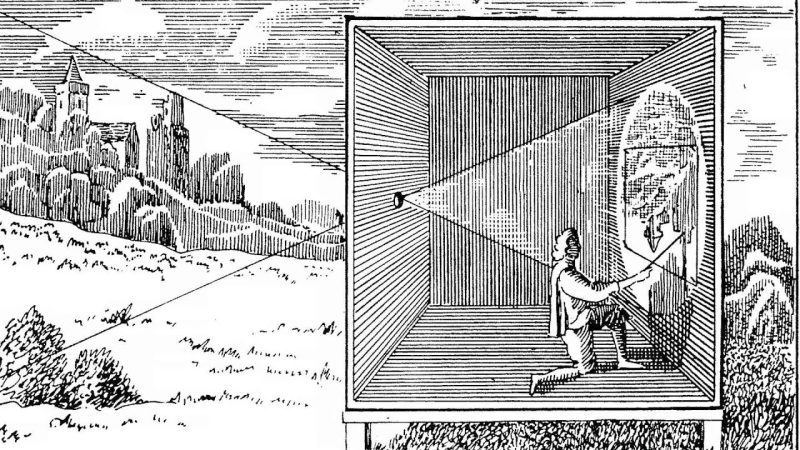
Photography, as we know it today, was invented in the early 19th century. The first practical photographic process was the daguerreotype, invented by Frenchmen Louis Daguerre and Joseph Nicephore Niepce in 1837. The daguerreotype process used a polished silver plate coated with light-sensitive chemicals, which was exposed to an image and then developed using fumes from heated mercury. The resulting image was a highly detailed, one-of-a-kind photograph on a metal plate.
However, the history of photography can be traced back to ancient times, when the principle of the camera obscura was discovered. Camera obscura is a device that projects an inverted image of the outside world onto a surface inside the box, it was used by artists to trace and draw.
In the 17th and 18th centuries, scientists and inventors began experimenting with ways to capture and fix images permanently. The earliest known surviving photograph is an image made by Niepce in 1826 or 1827 using a process called heliography.
It was not until the invention of the daguerreotype that photography became widely accessible to the public. The daguerreotype process was soon improved upon by other inventors, such as William Henry Fox Talbot, who developed the calotype process in 1840, which used paper negatives to produce multiple prints from a single image.
Over the following decades, photography continued to evolve and improve, with the invention of new processes and technologies such as the ambrotype, the tintype, and eventually, film.
Here is the Short Video that Briefs the How Photography was invented
From the moment it was created, photography has changed the way we view and capture the world. The invention of photography is nothing short of remarkable—it revolutionized art, and communication, and even allowed us to understand our environment in ways previously unimaginable.
The First Photograph.
In 1826, Joseph Nicephore Niepce of France became the first person to successfully take and preserve a photograph. His technique was known as the heliograph process, which involved exposing light-sensitive material in a camera lens for a period of time in order to capture an image. Although primitive compared to modern photography technology, Niepce’s early attempts provided the foundation for the future of photography as we know it today.
Invention of the Daguerreotype and its Benefits.
In 1839, two French inventors Louis Jacques Mande Daguerre and Nicéphore Niépce successfully developed a more advanced method for taking photographs known as the daguerreotype. This new process allowed images to be produced quickly, on metal plates. The daguerreotype made it easier for photographers to record scenes of everyday life and create beautiful artistic depictions in a way that was never before possible. These advancements revolutionized photography and made it a popular form of visual expression.
Development of Different Types of Roll Film and Its Advantages.
With the invention of different types of roll films, photographers were able to make quicker and easier exposures. In 1884, George Eastman patented a flexible gelatin dry-plate process that was further improved by Charles Bennet in 1888. This made it possible for photography to become a truly portable art form. This new method allowed photographers to quickly change to different films and plates, making it much simpler and cheaper to take pictures. With this improvement, amateur photographers could continue their practice without having to waste time developing each plate manually.
Digital Revolution in Photography – Creation of the SLR Camera.
The Digital Revolution in photography kicked off with the 1977 introduction of the stunningly complex and sophisticated SLR (Single-Lens Reflex) Camera, capable of automatically focusing and changing lenses. This camera allowed photographers to instantly preview their images with a flip up LCD screen and make adjustments before taking the photo. The innovation that made this possible came from Carl Zeiss’s four-lens Tessar design, introduced in 1902 and redesigned by Canon in 1959. Now, being a photographer is within the reach of anyone who has access to these incredible tools.
New Horizons in Photography – Graphic Art, Animation, Motion Pictures, etc.
With the introduction of devices such as digital cameras and even smartphones, it’s easier than ever to compose a photograph or create artful images. But navigation of the photography world isn’t limited to just capturing static visuals. Photography can now be used not only to capture stunning moments in time but also to bring visions to life through animation, motion pictures and graphic art. With recent advancements in technology enabling us to develop sophisticated software, harness unique camera settings and manipulate imagery with ease, the world of photography is a truly amazing yet rapidly developing field!
Hope this article helped you to figure out How Photography was invented. If you have any other thoughts, drop them in the comments below.









